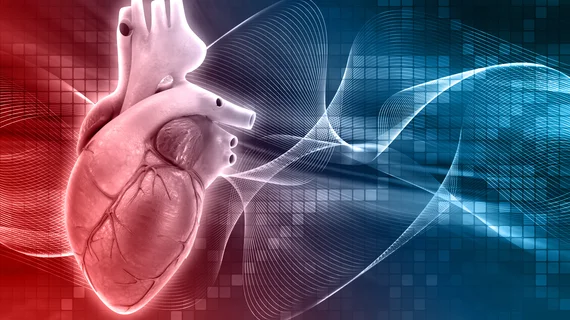Cardiac MRI contrast agents are low-risk and safe for ‘overwhelming’ majority of patients
Gadolinium-based contrast agents (GBCAs) used during cardiac MRI exams are low risk and safe to use in most patients, according to the results of a large study published Thursday.
German researchers reported few acute adverse effects among the more than 150,000 individuals who received a GBCA for imaging purposes, they explained in Radiology: Cardiothoracic Imaging.
The findings come three years after the European Union enacted laws prohibiting companies from marketing linear GBCAs except in liver imaging. While the U.S. Food and Drug Administration recommends that physicians carefully weigh gadolinium retention profiles when selecting agents, the same broad restrictions do not exist in the U.S.
“Using a large-scale patient cohort from several European countries, our study demonstrates that the administration of GBCA for cardiac MRI is safe for the overwhelming majority of patients,” lead author, Johannes Uhlig, MD, MPH, from University Medical Center in Goettingen, Germany, said in a statement. “In particular, macrocyclic GBCAs exhibit a favorable acute safety profile, and should be considered for cardiac MRI examinations evaluating myocardial scarring, ischemia, cardiomyopathy and myocarditis.”
Clinicians heavily rely on contrast-enhanced MRI to detect many heart-related issues, such as scarring, ischemia, cardiomyopathy, and myocarditis. And while studies have shown cerebral gadolinium deposition is more likely with linear GBCAs compared to the macrocyclic variety, the “clinical relevance” of this phenomenon isn’t well understood, the authors noted.
For their study, Uhlig et al. keyed in on 154,779 patients who underwent cardiac MRI as part of the multicenter European Society of Cardiovascular Radiology MRCT Registry. Of these participants, 95% received a GBCA.
After analysis, the team found 556 acute adverse effects in 145,855 contrast-enhanced MRIs, a rate of 0.38%, they noted. Only 47 were considered severe, which involved reactions such as chest pain and arrhythmia.
These outcomes also occurred during exams that didn’t use GBCAs. Among those 8,924 cases, Uhlig and colleagues reported 231 exam-related events, a rate of 2.59%. Most instances involved anxiety and shortness of breath.
The researchers noted that linear GBCA use has taken a dramatic downturn since 2017, plummeting from 15.2% to less than 1% in 2018 and 2019.
When it comes down to it, the group explained, clinicians should complete a GBCA assessment prior to exam time in order to determine if adverse events may be more likely.
“These analyses highlight the importance of establishing and maintaining large-scale prospective data registries, specifically in the field of radiology,” senior author Matthias Gutberlet, MD, a MRCT Registry co-founder, said.
Related MRI Contrast Agent Safety Content:
A deep dive into gadolinium-based adverse reactions
Allergic reactions to iodinated CT contrast increase likelihood of sensitivity to GBCAs
Researchers detail data on gadolinium-related adverse reactions
Radiologists must take a data-driven approach to discuss gadolinium, mitigate liability risk
Radiologists see potential to reduce GBCA administration with new synthetic MRI technique
Gadolinium-based contrast agents are safe, even at higher doses, new research suggests
Gadolinium debate rages on, with radiologist questioning recent GBCA liability guidance
ACR committee proposes new term for symptoms associated with gadolinium exposure
Closing the knowledge gap on gadolinium retention risks
Radiologists find direct evidence linking gadolinium-based contrast agent to higher retention rates
AI software that eliminates need for gadolinium contrast during imaging exams wins patent
Research may offer new method to detect GBCA on MRI
Radiology, other multispecialty groups urge caution with GBCAs during interventional pain procedures
Rodent brains retain gadolinium after repeated administration of GBCA a year after injection
Advanced MRI mapping spots traces of gadolinium in the brain invisible during conventional scanning
Radiologists should keep patients’ best interests in mind to mitigate gadolinium liability risk

